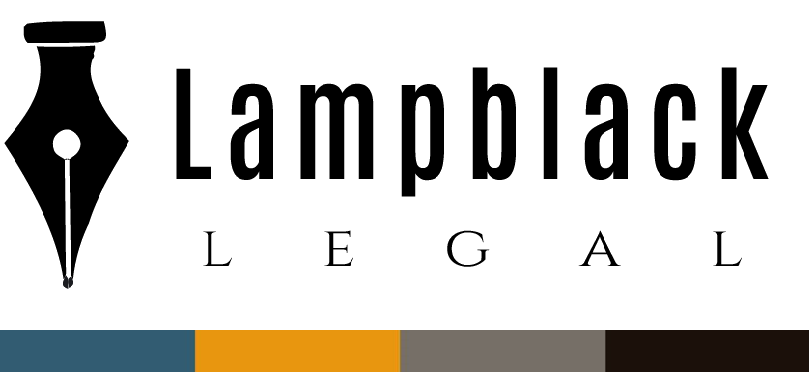The trademark registration process
Clients sometimes ask what the benefits of filing a U.S. trademark application. Before explaining whether or not it makes sense (or is even possible) to register a trademark in the U.S., we go over the trademark basics with the client. Firstly the definition - a trademark is any word, phrase, symbol, design, or a combination of these things that identifies goods or services as coming from the trademark owner, and distinguishes them from others.
Secondly, a business automatically creates what are known as “common law” trademark rights by using the word, phrase, symbol, design etc. to market their product. For example, if Penelope starts selling apple pies from her home in Los Angeles using the name “Penelope’s Perfect Pies”, Penelope has already created common law trademark rights without having to register anything. She could even use these rights as the basis of an infringement suit against anyone else in her neighborhood (but probably not further afield) who tries to use the same name.
So what’s the use in paying money to register a trademark, when trademark rights are automatic? Because a registered trademark provides valuable additional rights. Firstly, common law trademark rights are local, meaning they’re limited to the geographical area in which the business is operating (so Penelope couldn’t stop someone in Texas from using “Penelope’s Perfect Pies”). A federal trademark registration on the other hand applies nationwide, so if Penelope registers her trademark with the USPTO (United States Patent & Trademark Office), every single person in the country would be considered to be on notice that Penelope owns the name. This is far broader protection than applies to common law trademark rights, and would enable Penelope, from her small home-based business in L.A., to prevent anyone from adopting the “Penelope’s Perfect Pies” anywhere in the United States unless they can prove that they were using the name before Penelope.
Secondly, the USPTO will prevent anyone else from registering “Penelope’s Perfect Pies” in the future, and additionally Penelope’s federal trademark registration can form the basis of any infringement action against any else trying to use the trademark (again, provided they weren’t using it before Penelope).
Finally, and most importantly, by registering her trademark Penelope is building brand equity - a valuable intangible asset of her business.
So what does Penelope need to obtain a federal trademark registration? A few things:
Firstly her trademark has to be registerable which means that it has to be
(i) Capable of distinguishing her company’s goods/services from that of another (so for example, a Mexican restaurant could not register the name “Tacos & Enchiladas” because most Mexican restaurants serve Tacos and Enchiladas and so the name “Tacos & Enchiladas” doesn’t help the customer distinguish one company from the other.
(ii) Will not confuse consumers as to the origin of the goods or services because her trademark is too similar to another company’s trademark. Much in the same way that a competitor of Nike couldn’t register “Nikey” as a trademark, if there are any existing registrations that are too similar to Penelope’s, Penelope likely won’t be able to register her trademark.
(iii) Is not otherwise deceptive. Much as a company probably wouldn’t be permitted to register “Comet Cashmere” for polyester T-shirts (as the trademark is clearly deceptive), Penelope’s trademark registration can’t be deceptive in nature.
Secondly she has to be actively using her trademark in commerce, which means to sell goods/services in the United States, or if she’s not yet selling her pies, to attest that she intends to use the trademark by attaching it to goods/services she’s selling within six months of filing. This is in contrast to the system in most countries, where the trademark owner can obtain a trademark registration without ever actually using the trademark.
Thirdly Penelope has to prepare a trademark application which involves:
(i) Determining there are no conflicting trademarks already registered. This involves searching the federal trademark database, state trademark database, and taking diligent steps to determine if there are any unregistered trademark holders with pre-existing rights confusingly similar to the trademark being registered;
(ii) Selecting the appropriate trademark class. The USPTO divides goods and services into 45 classes (e.g. saxophones are in Class 15, wine in Class 33). The fee for filing in each category is $250 per trademark when using the USPTO’s streamlined (“TEAS PLUS”) system;
(iii) Describing the goods/services with specificity using a description listed in the Trademark ID manual (e.g. applicants can’t simply register “jewellery” as a description – instead a description might read “signet rings”), or by drafting a new description with sufficient specificity;
(iv) Determining the filing basis (which differs depending on whether the trademark is being actively used, or is only being filed based on an intent to use, and whether the owner has an existing trademark registration in another jurisdiction).
(v) Submitting the registration application, and then preparing for a decision from the USPTO. If the USPTO examiner requires clarification on any issues relating to the application, an office action will be issued. Office Actions are also issued for preliminary denials, e.g. when the trademark examiner feels that the trademark in question is confusingly similar to one already registered. Once the trademark examiner has approved the trademark application it is then published in the Federal Trademark Gazette for 30 days. This is to enable any individual or company who believes they have a pre-existing claim to the trademark, or who thinks that the trademark for which registration is being sought is confusingly similar to their own, to object. If an objection is received, then the matter must be resolved through either negotiation, or by Trademark Trial & Appeal Board (TTAB). If not opposition is encountered, the trademark proceeds to registration.
